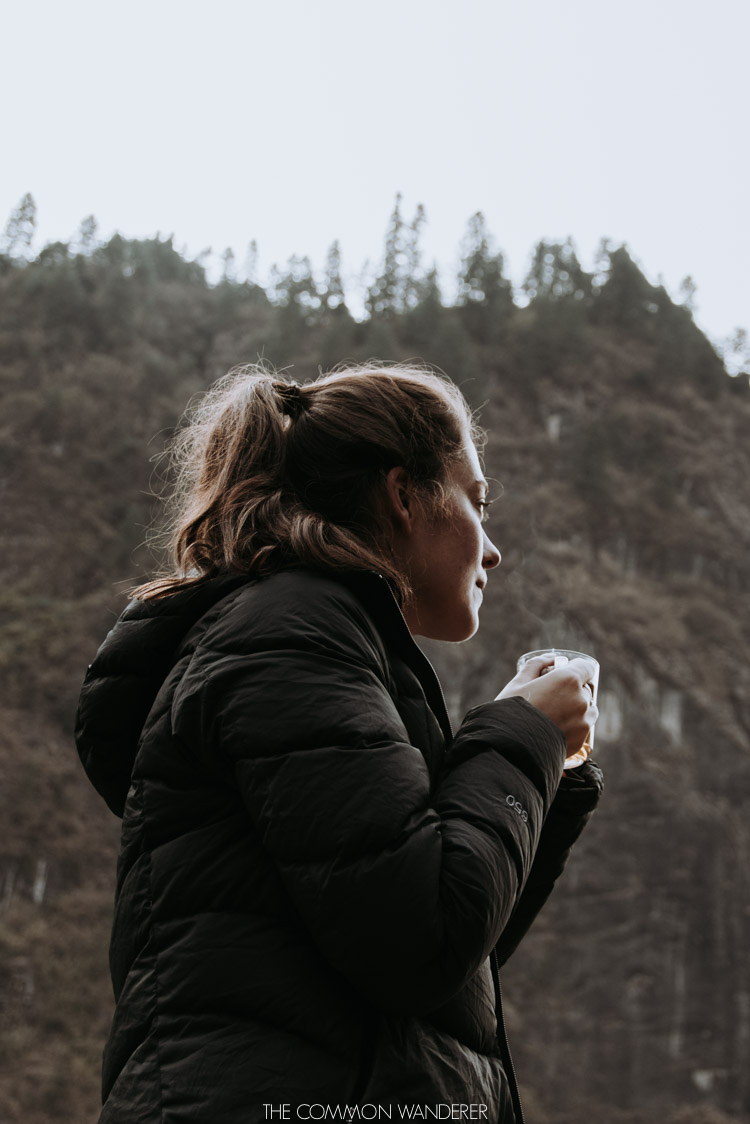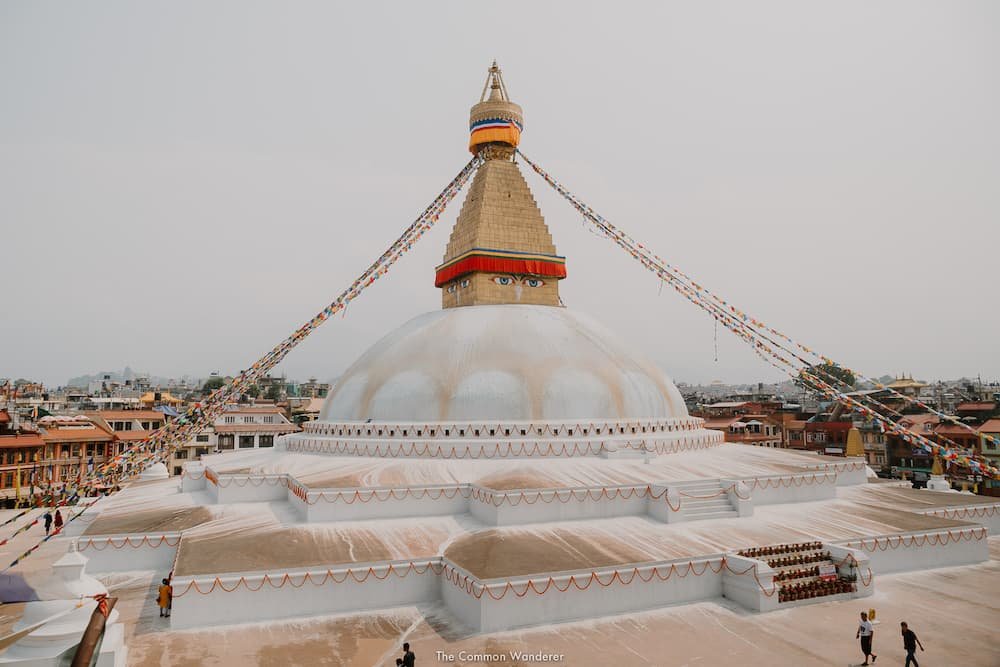Our Top Annapurna Circuit Trekking Tips
Is hiking Nepal’s Annapurna Circuit on your bucket list?
Yes: Good Decision.
No: Soz but it's time to rethink your life goals, stat.
The Annapurna Circuit is one of the most popular treks in the world and for good reason: It is abso-freaking-lutely unbelievable. We’re talking some of the most striking tallest mountains in the world, incredibly fresh air, clear mountain streams, quaint mountain villages and the famous Nepalese hospitality.
Trekking through these parts can be equal parts challenging and inspiring, and you’ll likely come away with a renewed sense of life and some FOMO inducing photos. But it’s also long and hard and therefore you need to be prepared.
Luckily, we aim to please.
Follow these Annapurna circuit trekking tips and you'll be standing on the shoulders of giants in no time!
OUR TOP ANNAPURNA CIRCUIT TREKKING TIPS
HIKING THE ANNAPURNA CIRCUIT IS A MARATHON, NOT A SPRINT
You know all that training you did? The 6-8 weeks of spending every weekend hiking? The tedious, early morning gym sessions? Well, this is when you'll use it, and you'll thank your lucky stars you put in the hard yards!
But don't think that just because you're super fit, you can run this whole trek. Nope! It's a marathon, not a sprint. “Bistaari, bistaari”. Slowly, slowly. These are the words you’ll hear from your guides most on your trek.
Why? Because walking slowly allows you to acclimatise better, which is important in these parts. An added benefit of walking slowly is you won’t fatigue as quickly and you’ll be able to take in more of the inspiring surrounds.
Don’t be a hero. Take it slowly.
keep reading: our comprehensive guide to kathmandu
TO CONQUER THE ANNAPURNA CIRCUIT, YOU MUST BE UBER POSITIVE
The Annapurna region is a positive vibes only kinda place so leave any negativity at home. Walking 13 days straight ain’t always easy, especially when altitude kicks in. You and your trekking mates will have as many ups as you have downs, and you’ll all need a little boost here and there. We know it sure helped us, having a positive group who helped each other every day!
Don’t be the whinger in your group; channel all the happy vibes. Simples.
DON'T HOLD BACK, EAT ALL THE FOOD
Take it from us, wanderers – eating gives you energy and you need a LOT of energy when hiking the Annapurna Circuit.
Don’t fret, you’re not going to pack on the kg’s. In actual fact, hiking at altitude means you’ll shed them so eat all the glorious food. We're the best examples of this, as despite eating everything, we came back super slim and toned. YAY!
The best food for energy on the trail is porridge for breakfast and Dal Bhat for lunch and dinner. Trekking the Annapurna Circuit is also the best excuse for eating a chocolate bar per day. Load up on your favourite treats and snack on these during the day for some quick energy!
Learn more about the delicious food you can eat with this Nepal food guide.
nepal’s best short hike: the ultimate guide to the poon hill trek
DRINK ALL THE FLUIDS TO STAY HYDRATED
Obvious but important notice alert: your body will dehydrate quicker than usual at altitude and with all this walking, so a key Annapurna Circuit trekking tip is to keep knocking back those fluids. This means 4 litres a day minimum.
Tea, soup, and hot chocolate also count as fluids on your Annapurna trek. If you’re sick of water, substitute for some of these options at breakfast or lunch.
Bonus tip: you know how the chemical name for water is H2O? The O stands for Oxygen – which means drinking water can give your oxygen levels a mini boost when the air starts getting thin.
Science, fo real.
nepal’s backpacker paradise: a traveller’s guide to pokhara
SAY NO TO PLASTIC BOTTLES AND SAVE THE ENVIRONMENT
On the topic of water, show your love for the environment by not buying a new plastic bottle at each teahouse.
We travel everywhere with our The Grayl water purification and filtration bottles, which allow us to fill up from any water source and drink tap water wherever we go (including in India!). They’re seriously the best travel investment we’ve ever made, and they’ve basically cut our plastic usage on the road down to nearly zero.
Alternatively, if you’re not looking to invest in an option like that, we’d recommend grabbing a few portable canteens in Kathmandu to use as your water bottles. Fill them up each day at the safe water stations in each village and add aquatabs or a steri-pen (to be extra safe!).
where to next? 21 incredible things to see and do in nepal
SHOWER WHENEVER YOU CAN
There’s no better feeling than finishing a hard day’s walk with a quick shower.
Solar hot showers are a thing for most of the Annapurna Circuit trek, so make full use of these where you can. Be warned though, this may mean fighting your fellow travellers to get in first before the heat mysteriously disappears.
Or if you see the clouds start to swell, take a shower backpacking in the rain.
In the final days, you’ll find it really is too cold to shower safely (ever tried to warm up in -10c weather with wet hair?!). The trusty wet wipe shower is key to your cleanliness and survival here.
TAKE DIAMOX TO DEAL WITH THE ALTITUDE
One of our biggest Annapurna Circuit trekking tips is to give serious thought to how you're planning to manage your reaction to high altitude. You will go up to dizzying heights, and being adequately prepared for these is the difference between a great travel story and ending up in hospital (or worse).
This tip is really up to you and your doctor, but we recommend taking Diamox (acetazolamide) after 3000m. Diamox can reduce the symptoms of altitude sickness (AMS) including headaches, tiredness, nausea, dizziness and shortness of breath and is a no brainer if you’re worried about AMS. Again, we're not medical professionals, so do your research and speak to your own doctor.
Take Diamox, walk slowly and everything should be fine. If not, alert your guide as soon as you feel symptoms.
TAKE PLAYING CARDS TO SURVIVE THE DOWN TIME
Whether it’s while your lunch is cooking or because you arrived early into camp, you’ll have on average four hours of downtime a day during the Annapurna Circuit trek. That’s a LOT of time.
While it might be the perfect opportunity to read a book, they can be a drainer to carry around in your backpack. Instead, bring a pack of playing cards (or better yet, Cards for Humanity) and unleash your competitive fury on your fellow travellers. It’s fun, wastes hours and it’s also a great way to meet new people. Who doesn’t like playing a game of cards?!
TAKE ENOUGH CASH TO LAST THE HIKE
Guys, you've got to remember, this is the Himalayas, ain’t no ATMs up here until well after Thorong La Pass. Stock up on cash before you leave and you won’t have to awkwardly borrow off your trekking mates.
$20USD a day should cover all your costs easily. If your budgeting skills aren’t super, separate your cash into plastic pockets for each day, and only spend what’s allocated in each.
Don’t forget to budget extra for tips for your guides and porters too (we learnt this the hard way)!
Do you have any other Annapurna Circuit trekking tips? Be sure to leave yours in the comments below!
Inspired to book your plane ticket to Nepal yet? If so, we highly recommend travelling Nepal with Intrepid Travel.
Their Everest Base Camp and Annapurna Explorer tours are exceptional value for money, and use quality guides.
SEE THESE POSTS FOR MORE NEPAL INSPIRATION
DISCLAIMER: WE WERE SPONSORED BY THE INTREPID GROUP ON THIS TRIP.
AS ALWAYS, ALL OPINIONS, MUSINGS, AND ERRORS, ARE VERY MUCH OUR OWN
Some of the links on this post are affiliate links.
If you choose to purchase using these links, we receive a small commission at no extra cost to you. Please know that by using these affiliate links, you're directly supporting The Common Wanderer to stay wandering, the running costs of the site, and our ability to provide you with free content to help you on your travels.
That, and you're officially a legend.


























